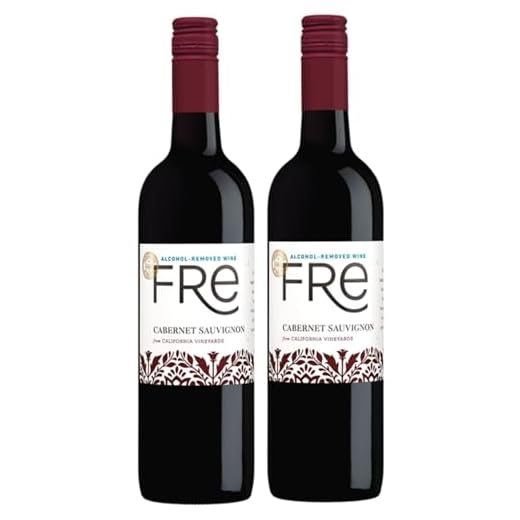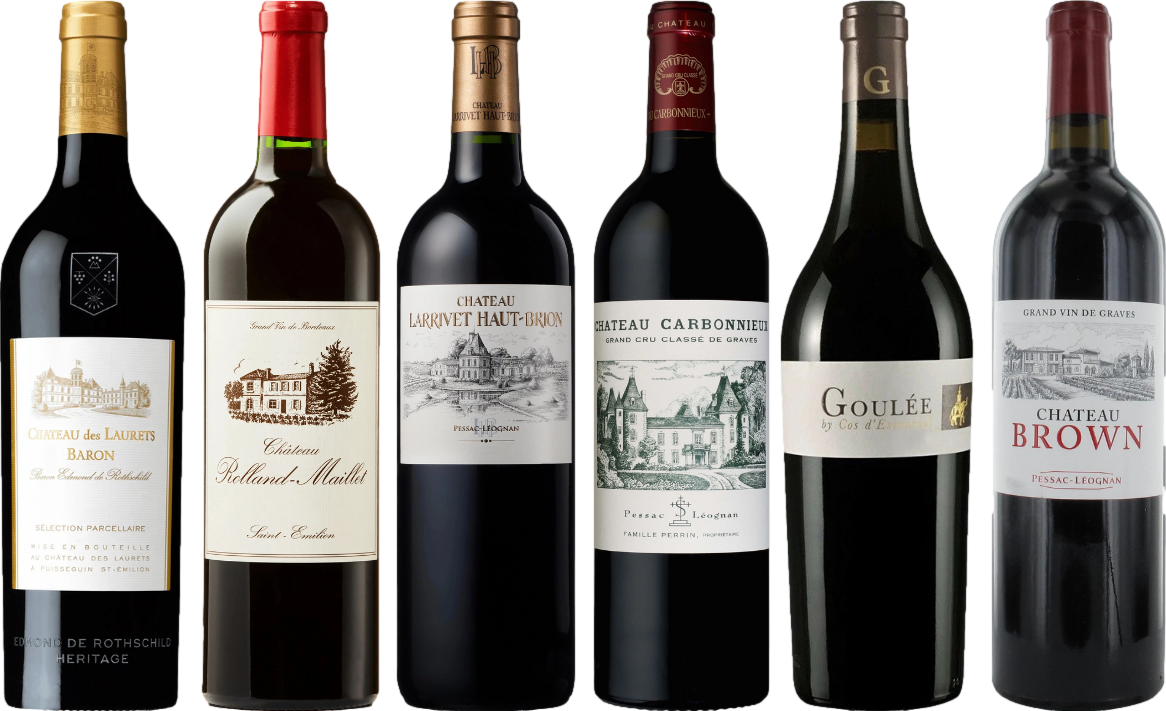



Begin with the grape variety. Cabernet Sauvignon offers bold flavors and tannins, ideal for hearty dishes. Pinot Noir, on the other hand, presents a lighter profile, making it versatile for various cuisines. Merlot strikes a balance with its smoothness, complementing both red meats and poultry.
Next, consider the region of origin. French Bordeaux and Burgundy have established reputations, while Italian Chianti and Barbera provide unique character. New World options, such as Californian Zinfandel or Australian Shiraz, often showcase fruit-forward profiles, appealing to those who enjoy bolder tastes.
Finally, assess the vintage. Years with favorable weather conditions yield exceptional produce. Research specific years known for quality in your chosen region. This knowledge can elevate the experience, ensuring you enjoy a bottle that reflects the best of its harvest.
Choosing the Right Variety
Prioritize the grape type based on your preferences. If you enjoy bold flavors, opt for varieties like Cabernet Sauvignon or Syrah. For a lighter experience, consider Pinot Noir or Gamay. Understanding the characteristics of each grape will guide your decision.
Consider the Region
The origin of the beverage significantly impacts its flavor profile. Regions such as Bordeaux and Napa Valley are known for rich, full-bodied options, while wines from Burgundy offer elegance and finesse. Explore different areas to discover unique expressions.
Tasting Notes
- Look for descriptors on the label–fruity, earthy, spicy–to match your palate.
- Pay attention to the vintage; some years produce superior quality due to climate conditions.
- Read reviews or consult experts for recommendations on specific bottles.
Engage in tastings at local shops or wineries to refine your preferences. Experiment with food pairings to find harmonious combinations that enhance your experience. Always opt for a bottle that resonates with your taste, ensuring satisfaction in every sip.
Understanding Different Red Wine Varietals
Focusing on specific grape types is a great way to refine your choices. Cabernet Sauvignon, known for its bold structure and dark fruit flavors, pairs well with hearty dishes like steak. Merlot, softer and fruitier, complements roasted chicken and pasta with tomato sauce.
Pinot Noir offers elegance and complexity, making it a perfect match for lighter fare such as salmon or duck. Syrah, with its spicy and robust profile, works beautifully with barbecue and rich stews. Malbec, celebrated for its dark berry notes, goes well with grilled meats and spicy cuisine.
Tempranillo, the star of Spanish reds, boasts earthy and fruity notes, pairing excellently with tapas or grilled vegetables. Zinfandel, with its jammy character, shines alongside pizza and barbecue ribs.
Exploring these varietals can greatly enhance your experience. Understanding their unique characteristics allows for better pairings and greater enjoyment. Prioritize trying different styles to discover what resonates with your palate.
Identifying Your Flavor Preferences
Begin by noting the flavors you enjoy in various beverages, such as fruits, spices, or herbal elements. Keep a tasting journal to record your impressions of each glass. This will help you recognize patterns in your preferences over time.
Focus on the primary taste categories: sweetness, acidity, tannins, and body. Understanding these elements will guide you toward options that align with your palate.
| Taste Element | Description</th |
|---|---|
| Sweetness | Fruits like cherry or blackberry indicate a sweeter profile, while dry options lean towards less sugary notes. |
| Acidity | A brighter, more refreshing quality often comes from higher acidity, reminiscent of cranberries or citrus. |
| Tannins | These create a drying sensation in your mouth, often found in robust varieties. Consider how much astringency appeals to you. |
| Body | This refers to the weight of the drink in your mouth. Lighter styles feel more delicate, while fuller-bodied selections offer a rich experience. |
Pairing is another avenue to explore. Experiment with different dishes and observe which combinations enhance your enjoyment. This practice will refine your understanding of what you like.
Lastly, consider regional influences. Different areas produce unique characteristics based on soil, climate, and winemaking techniques. Tasting wines from various regions can broaden your appreciation and help you pinpoint your favorites.
Assessing Labels and Regions
Examine the label carefully; it holds vital clues about the contents. Key elements include the varietal, region of origin, and vintage. The varietal reveals the type of grape used, while the region influences flavor profiles based on climate and soil conditions. For instance, wines from Napa Valley often showcase bold fruit flavors, whereas those from Burgundy exhibit more nuanced earthiness.
Regional Considerations
- Bordeaux: Known for blends, primarily Cabernet Sauvignon and Merlot. Expect structured wines with aging potential.
- Tuscany: Home to Sangiovese, producing wines with bright acidity and cherry notes. Look for Chianti Classico for reliable quality.
- Barossa Valley: Australian region famous for Shiraz, offering rich, bold flavors with hints of spice.
- Rioja: Spanish wines primarily made from Tempranillo, known for their oak aging and complex aromas.
Understanding Vintage
The year on the label indicates the harvest. A hot year may yield riper fruit, while a cooler year can produce more balanced acidity. Research the weather conditions of the vintage to better gauge the wine’s character. For example, 2010 was a remarkable year for many regions, leading to exceptional quality across various styles.
Lastly, always consider the producer. Established vineyards often maintain higher quality control and consistency. Look for producers with a good reputation in their region, as this can significantly enhance your selection process.
Choosing the Right Vintage and Year
Opt for bottles from reputable regions where climate and soil have consistently produced quality grapes. For example, Bordeaux and Napa Valley are known for their exceptional harvests in specific years. Consider the vintage charts available online, which evaluate years based on overall weather patterns and wine quality.
Pay attention to the aging potential of the varietal. Wines like Cabernet Sauvignon and Syrah often benefit from extended aging, while others, such as Pinot Noir, may be best enjoyed young. Research the specific varietal’s characteristics and its performance in various years to make an informed choice.
Focus on the producers. Renowned winemakers often have a track record of excellence across multiple vintages. Look for consistency in quality, which can be a good indicator of when to invest in a particular year.
Consider the occasion for which you are purchasing. If you’re planning to pair with a rich beef dish, check vintages that have shown success in complementing such flavors. For instance, a 2010 Bordeaux or a 2015 Napa might enhance your meal beautifully. If you’re looking for an ideal pairing, check out this guide on how to cook a beef burger in an air fryer.
Lastly, trust your palate. Tasting events or local wine shops can be invaluable for experiencing different years side by side. This firsthand experience will refine your preferences and help you make better selections in the future.
Pairing Deep-Hued Vintages with Cuisine
Opt for a full-bodied Merlot with roasted lamb. The wine’s fruitiness complements the meat’s richness, while its tannins soften the dish’s bold flavors.
For a hearty pasta with marinara sauce, a Chianti classico works wonders. This Sangiovese-based option has the acidity to cut through the sauce’s richness, enhancing both the wine and the dish.
When serving grilled steak, a robust Cabernet Sauvignon is ideal. The wine’s structured tannins balance the meat’s fat, creating a harmonious experience on the palate.
If you’re enjoying a charcuterie board, consider a fruity Grenache. Its berry notes and lower tannin content pair well with cured meats and cheeses, allowing the dish’s variety to shine.
For a rich chocolate dessert, a vintage Port or a Shiraz can elevate the experience. Their sweet profiles and spiciness complement the dessert’s richness beautifully.
While enjoying a spicy barbecue, a Zinfandel can be a delightful choice. Its jammy flavors and peppery finish match the smoky notes of the grilled fare.
In the case of mushroom risotto, a Pinot Noir is superb. The wine’s earthiness mirrors the dish’s umami, creating a lovely synergy.
For a light summer salad with berries, a Gamay is refreshing. Its bright acidity and fruity profile enhance the dish’s freshness without overwhelming it.
Buying Tips for Selecting Quality Red Wine
Focus on reputable producers. Familiarize yourself with wineries known for their consistent quality. Reading reviews and seeking recommendations can guide you toward trustworthy options.
Examine the price point. While higher cost doesn’t always guarantee excellence, extremely low prices often indicate compromised quality. Look for bottles within a moderate price range, typically between $15 and $50, for a balance of value and taste.
Consider the region. Regions like Bordeaux, Napa Valley, and Barossa Valley have established reputations for producing exceptional offerings. Research specific areas to understand their unique characteristics and find hidden gems.
Pay Attention to the Label
Analyze the information on the label. Look for terms like “Estate Bottled” or “Single Vineyard,” which suggest a higher level of care and quality in production. Be wary of generic or vague designations that lack specific vineyard information.
Check the alcohol content. Typically, higher alcohol levels can indicate riper fruit, but too much can overpower the palate. A range of 13% to 15% is generally preferable for balance.
Engage Your Senses
Trust your palate. If possible, taste before buying. Attend tastings or local events where you can sample various selections. Engaging your senses in this way allows you to discover preferences and refine your choices.
Lastly, keep an open mind. Explore various styles and varietals, even those outside your comfort zone. You may uncover delightful surprises that broaden your appreciation for fine beverages.










